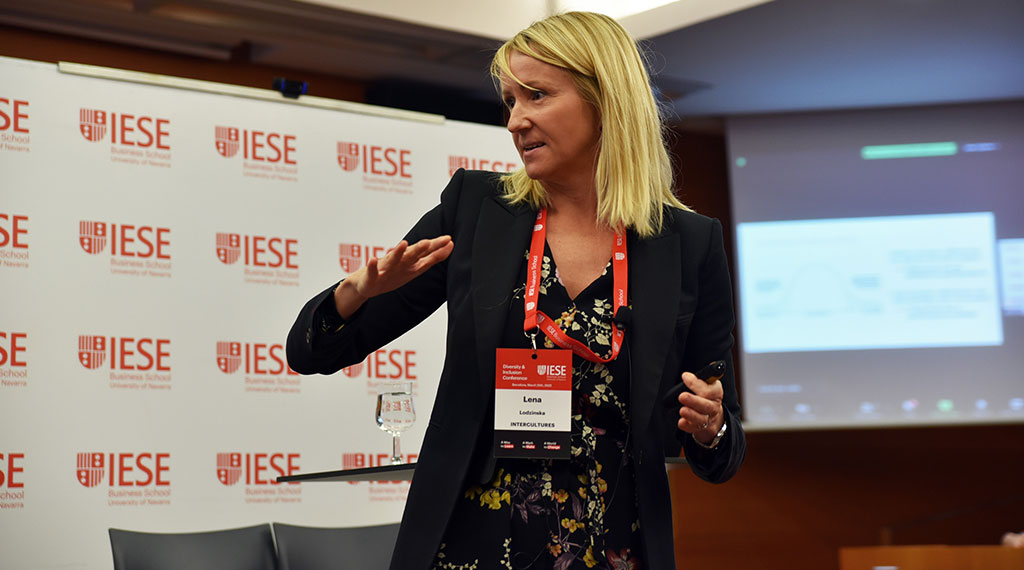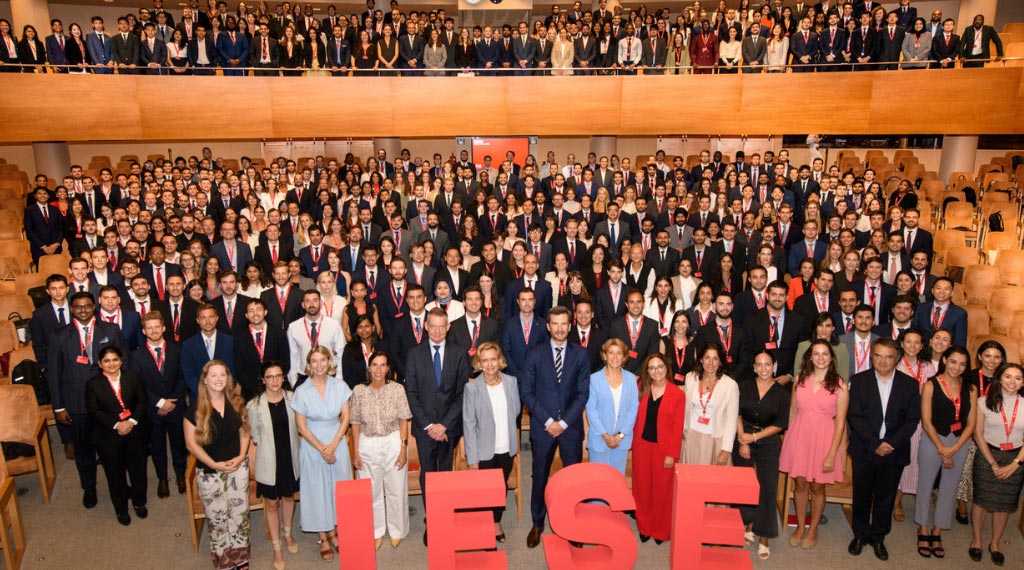Stories
Harnessing the power of diversity in the workplace
3rd MBA Diversity and Inclusion Conference looks at how to make inclusion a reality
Lena Lodzinska, founder and director of Instituto Inside Out, speaks at the conference.
March 25, 2022

Employees increasingly demand workplaces that celebrate diversity, and there is a growing body of research that inclusive teams are more innovative and effective. It’s difficult to argue with the idea that workplaces – where we spend so much of our lives – should make everyone feel valued.
And yet creating truly inclusive workplaces has proven challenging for many companies. What policies make a difference? How do you change culture? What kind of leadership is required?
The 3rd Diversity and Inclusion Conference, organized by IESE MBA students, looked at ways to harness the power of diversity at work. The event was held on the Barcelona campus and online, and was sponsored by multinational beverage company Diageo and consultancy BCG.
For Myrtha Casanova, a pioneer in the area and founder of the European Institute for Managing Diversity, inclusion begins with awareness of our complexities. While part of our identities such as gender, age and ethnicity may be visible, other parts such as competencies, family structures, culture and language are invisible. “You don’t know what a person can do just by looking at them,” Casanova said. The inclusion process is learning the reality of the person, and getting to know what they can do.
Diverse vs Inclusive
“The real challenge here is the application” of diversity and inclusion goals, said Marc Badia, director of IESE’s MBA program., or what Maria Puig, director of IESE’s recently created Dignity, Diversity and Belonging office, called managing diversity in a “conscious and strategic way”.
It is in that application when diverse teams become inclusive teams. It’s a crucial distinction, because diverse groups – where there is a variety of backgrounds or profiles — tend to create conflict. Inclusive groups – in which people know each other, appreciate their differences and have common objectives – are the most successful.
“Those are the groups that are innovative in a company. Those are the groups that are going to take the company into the future,” said Casanova.
For Ursula Mejia-Melgar, Marketing Director, Southern Europe at Diageo, creating a diverse workplace begins with the individual. “You can do it first and foremost by being yourself, by bringing your full self to work,” Mejia-Melgar said. “There’s a personal role that we can each play.”
Then, there are many measures companies must take. “It can’t be the statement alone. It needs to be engrained in the values,” Mejia-Melgar said. That means setting specific targets – in areas such as female representation in the executive team – as well as policies like maternity and paternity leave. And then there are a host of other possible actions, such as looking for diverse representations in marketing materials.
Antonio Bebba, Diversity, Equity & Inclusion Regional Operations Lead (Europe) at Pfizer, agreed that it’s a complex process, which involves defining a company’s values and ensuring every employee knows what they are. Pfizer has started to measure not only business targets but also how much people are living the values as they work towards those targets.
The gain is across the board, and not just for specific groups, he noted. “Diversity and inclusion impacts every person,” he said.
Psychological Safety and Love
For Lena Lodzinska, Founder and Director of Instituto Inside Out, the basis of an inclusive workplace is creating an environment in which people can speak out, express their ideas and opinions, and be heard. “The base for innovation is actually psychological safety,” she said. How to boost psychological safety at work? She identified five ways:
- Nurturing trust and using transparent and inclusive communication
- By leaders embracing candor and being open to constructive and corrective feedback
- Cultivating self-awareness
- Championing a no-blame culture
- Valuing colleagues and employees
The conference ended with a speech by Arthur Brooks, a best-selling author and professor at Harvard Business School, who urged conference attendees to put love at the center of their lives: in their treatment of others, in their approach to friendship and family, in their attitude toward work.
Only by embracing love and genuine relationships do we make meaningful use of our time. Love gives life purpose and is the antidote to loneliness and depression, he said.
“If you’re not in the business of love, you’re doing it wrong,” Brooks said. “If you’re not doing things with love, they mean nothing.”


